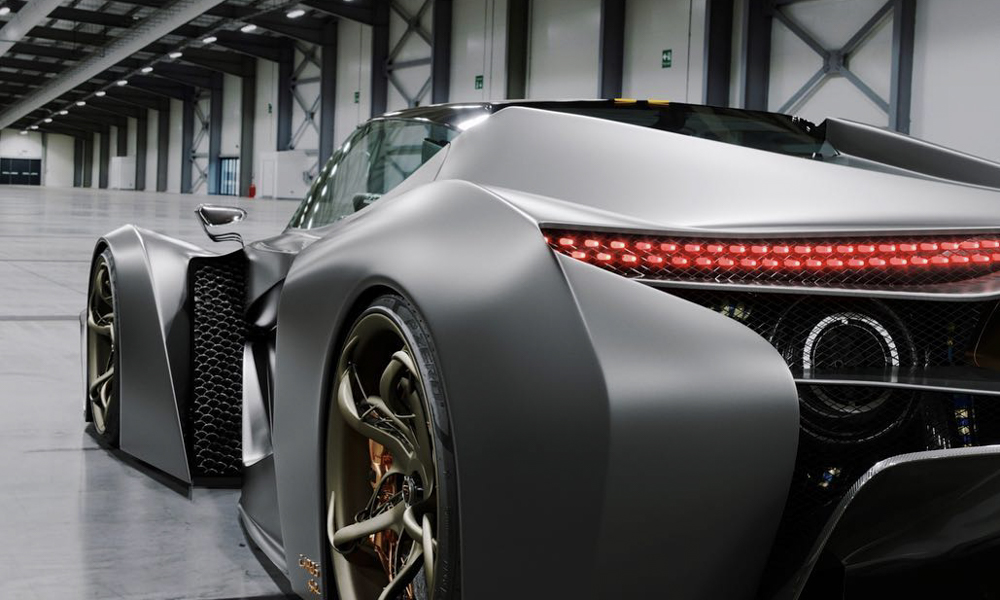In the ever-evolving world of automotive design, materials play a critical role in determining a vehicle’s performance, safety, and efficiency. Among the cutting-edge materials being integrated into modern vehicles, carbon fiber stands out as a lightweight yet incredibly strong option. While it has long been associated with high-performance sports cars and aerospace engineering, carbon fiber is gradually making its way into everyday cars. But is it the ultimate solution for the future of automotive materials, or does it come with limitations? Let’s explore.
What is Carbon Fiber?
Composition and Manufacturing
Carbon fiber is composed of ultra-thin strands of carbon atoms bound together in a crystalline structure. These fibers are woven into fabric or combined with resin to form a composite material. Manufacturing involves several stages, including oxidation, carbonization, and weaving, which result in a material that is both strong and lightweight.
Key Properties of Carbon Fiber
- Strength-to-Weight Ratio: Carbon fiber is significantly stronger than steel and aluminum while weighing much less.
- Durability: It is resistant to corrosion and environmental degradation.
- Design Flexibility: Its adaptability allows for intricate shapes and designs, offering creative freedom to car manufacturers.
Applications of Carbon Fiber in Cars
Structural Components
Carbon fiber is used for body panels, hoods, roofs, and even entire chassis in some vehicles. These components are lighter and stronger, improving overall vehicle dynamics.
Performance Enhancements
By reducing weight, carbon fiber enhances a car’s acceleration, braking, and handling. It also improves aerodynamics, reducing drag and increasing efficiency.
Integration in Electric and Hybrid Vehicles
In electric and hybrid cars, carbon fiber contributes to better range by reducing vehicle weight, making it easier for batteries to power the vehicle. It’s also used in battery enclosures for added safety and efficiency.
Luxury and Sports Cars vs. Everyday Cars
While luxury brands like Lamborghini and McLaren have pioneered its use, mainstream manufacturers are exploring cost-effective ways to incorporate carbon fiber in everyday cars, such as the BMW i3 and Toyota Prius Prime.
The Pros of Carbon Fiber in Everyday Cars
Weight Reduction
Lighter vehicles consume less fuel and produce fewer emissions. In electric vehicles, this means extended range and improved battery efficiency.
Improved Strength and Durability
Carbon fiber’s exceptional strength provides better crash protection and enhances the longevity of car components.
Aesthetic Appeal
Its sleek, high-tech appearance adds a premium look to cars, making them visually appealing and customizable.
Sustainability Potential
Carbon fiber contributes to environmental sustainability by reducing fuel consumption and emissions. Efforts to recycle carbon fiber are also progressing, further enhancing its green credentials.
Technological Advancements
Innovations in manufacturing techniques are driving down costs, making carbon fiber more accessible for mid-range vehicles.

The Cons of Carbon Fiber in Everyday Cars
High Cost
The primary drawback is its expense. Both raw materials and production processes are significantly costlier than traditional materials like steel or aluminum.
Repair Challenges
Carbon fiber’s rigidity makes it difficult and expensive to repair. Damaged components often need to be replaced entirely.
Limited Recyclability
While advancements are being made, recycling carbon fiber composites remains a challenge. End-of-life disposal raises environmental concerns.
Production Constraints
Manufacturing carbon fiber is time-intensive and not yet scalable for mass production, which limits its widespread use in everyday vehicles.
Suitability for Everyday Use
In practical, day-to-day driving, the performance advantages of carbon fiber may not justify its cost for average consumers.
Comparison with Alternative Materials
Steel and Aluminum
Steel remains the most affordable and widely used material, known for its strength and recyclability. Aluminum is lighter but lacks the strength and rigidity of carbon fiber.
Other Composites
Fiberglass offers some benefits of carbon fiber at a lower cost, but it doesn’t match its strength-to-weight ratio.
Emerging Materials
Innovative materials like graphene composites are being explored, offering similar benefits to carbon fiber with enhanced properties.
Real-World Examples
Luxury and Sports Cars
Manufacturers like Ferrari, McLaren, and Porsche use carbon fiber extensively to enhance performance and aesthetics in high-end models.
Mass-Market Adaptation
The BMW i3 and Toyota Prius Prime are notable examples where carbon fiber has been successfully integrated into more affordable cars.
Case Studies
Analyzing the successes and limitations of these vehicles helps identify the practicality of carbon fiber for everyday cars.
Future of Carbon Fiber in Everyday Cars
Technological Advancements
New production methods, such as automated weaving and 3D printing, are reducing costs and improving scalability.
Shifting Industry Trends
The focus on sustainability and the circular economy is driving innovation in carbon fiber recycling and reuse.
Market Outlook
As manufacturing becomes more efficient, carbon fiber adoption in mid-range vehicles is expected to grow. However, overcoming cost and recyclability challenges remains critical.
Conclusion
Carbon fiber presents a compelling case for the future of automotive materials. Its lightweight, strength, and aesthetic qualities are unparalleled, offering numerous benefits for vehicle performance and sustainability. However, challenges like high costs, repair difficulties, and recycling limitations cannot be overlooked. As technology advances, the gap between carbon fiber’s potential and its practical application is expected to narrow, making it an exciting prospect for the automotive industry.
By balancing its pros and cons, manufacturers can determine the best use cases for carbon fiber, ensuring that it contributes meaningfully to the evolution of everyday cars.

 Why Mobile Tyre Replacement is the Future of Car Maintenance
Why Mobile Tyre Replacement is the Future of Car Maintenance  The Real Cost of Anime Car Wraps: What You Need to Know Before Going Full Itasha
The Real Cost of Anime Car Wraps: What You Need to Know Before Going Full Itasha  The Importance of Quiet Generators for Peaceful Sleep: Featuring the Jackery Solar Generator 2000 Plus
The Importance of Quiet Generators for Peaceful Sleep: Featuring the Jackery Solar Generator 2000 Plus  Why WEX Motorpass Is the Smart Choice for Business Fuel Management
Why WEX Motorpass Is the Smart Choice for Business Fuel Management  Top Choice for 4WD and Overlanding Rentals in Bozeman
Top Choice for 4WD and Overlanding Rentals in Bozeman  How Car Window Tinting Enhances Privacy and Protection on the Road
How Car Window Tinting Enhances Privacy and Protection on the Road  Certified Preowned Cars: Are They Worth It?
Certified Preowned Cars: Are They Worth It?  Apps That Help Diagnose Car Problems Like a Mechanic
Apps That Help Diagnose Car Problems Like a Mechanic  How to Track Fuel Efficiency and Expenses Using Smart Apps
How to Track Fuel Efficiency and Expenses Using Smart Apps 